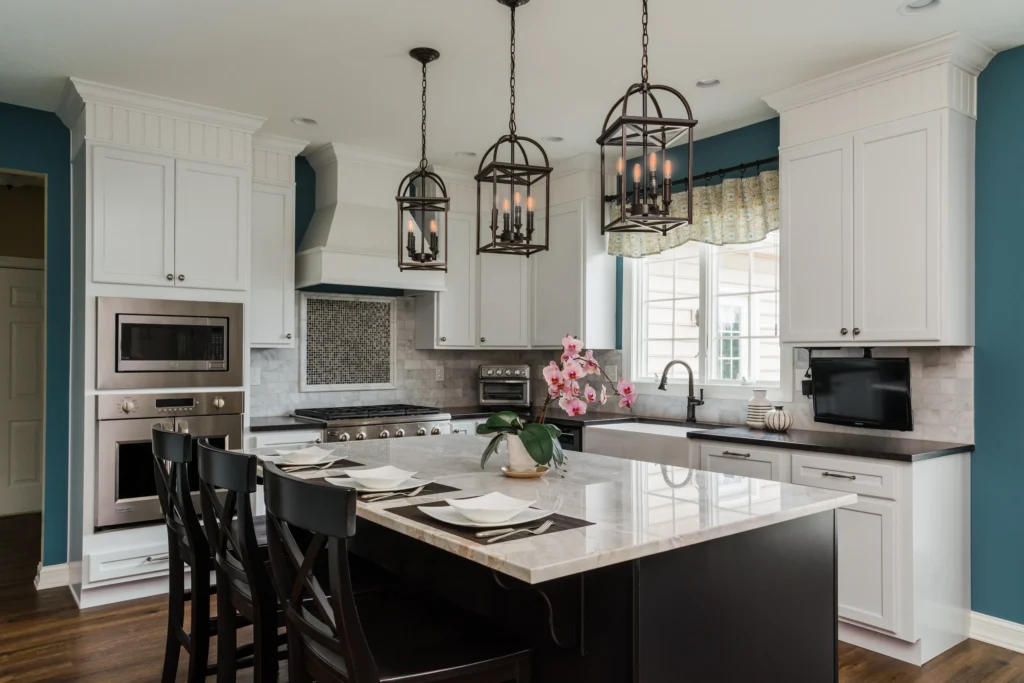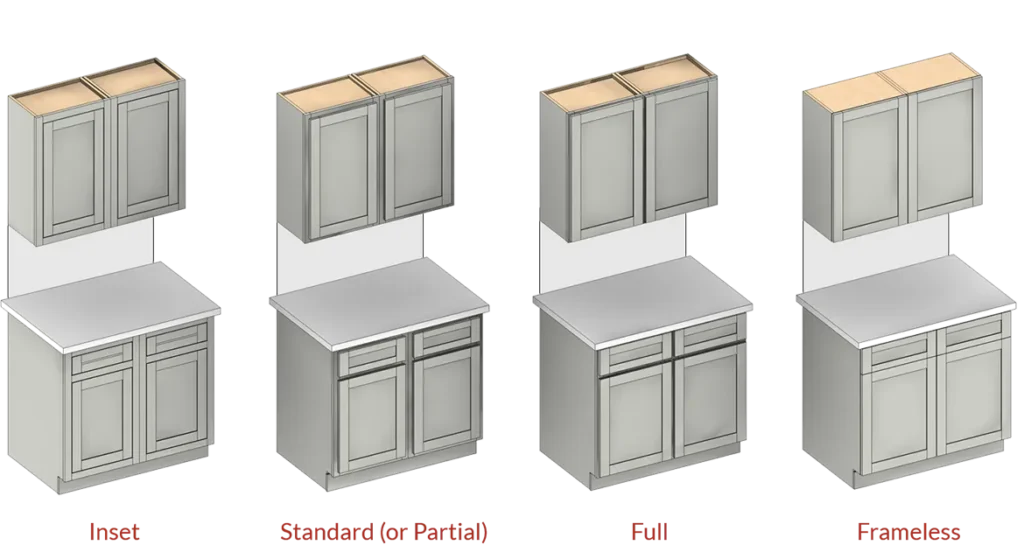Many homeowners have an idea of a budget for kitchen cabinets, but few have considered the intricate detail involved in pricing both the supplying and installing of a set of cabinets. Here are a few factors that affect cabinetry costs.
Cabinet box thickness and material
Cabinetry may look the same on the outside while having major differences in construction. While lower in price, cheaper cabinets may suffer from poorer quality and result in further problems down the road. The highest-end custom cabinetry boxes are usually constructed of 3/4-inch plywood, but the cheapest boxes may have 1/2-inch particle board sides and a 1/8-inch masonite back, greatly affecting the durability and quality of the installation. After installation, these cheaper cabinets may be subject to movement and be out of square, resulting in a less finished look. There’s also the possibility of the hinges ripping out of the sides after a few years, not to mention other durability issues. There are many options for cabinet box construction, but we typically recommend at least 1/2-inch plywood back and sides for durability and quality of the finished product.
Ceiling detail
The classiest and most expensive look involves installing a two-piece crown molding at the top of cabinetry in order to make the crown molding flush with a ceiling, which likely isn’t completely level. You can save money by using a one-piece crown, but it is difficult and in some cases impossible to install the crown flush with the ceiling. The cheapest look involves no crown molding at all, but if you are investing in new cabinetry, we recommend choosing some sort of crown molding detail to increase the quality of the design.
The picture below shows our two-piece crown detail in this kitchen, where we used beadboard with a 4-inch crown with the cabinetry flush to the ceiling.

Frameless cabinetry, inset cabinetry, overlay cabinetry
You can save a lot of money on cabinetry by choosing 1/2-inch overlay cabinetry, but it is the cheapest look. The classiest look is frameless or inset cabinetry, but these require 3/4-inch construction (frameless) and higher precision of carpentry (frameless and inset), which involve higher production prices. Full overlay cabinetry is typically nicer than 1/2-inch overlay and can be a viable budget option for a client. This resource explains the difference in detail if you’d like more info.

Due to the amount of detail in pricing cabinetry, clients are often comparing apples to oranges when procuring several quotes from cabinetry companies. It is most important to select a kitchen designer you trust to work through complex design and budget decisions that factor into purchasing cabinetry.
